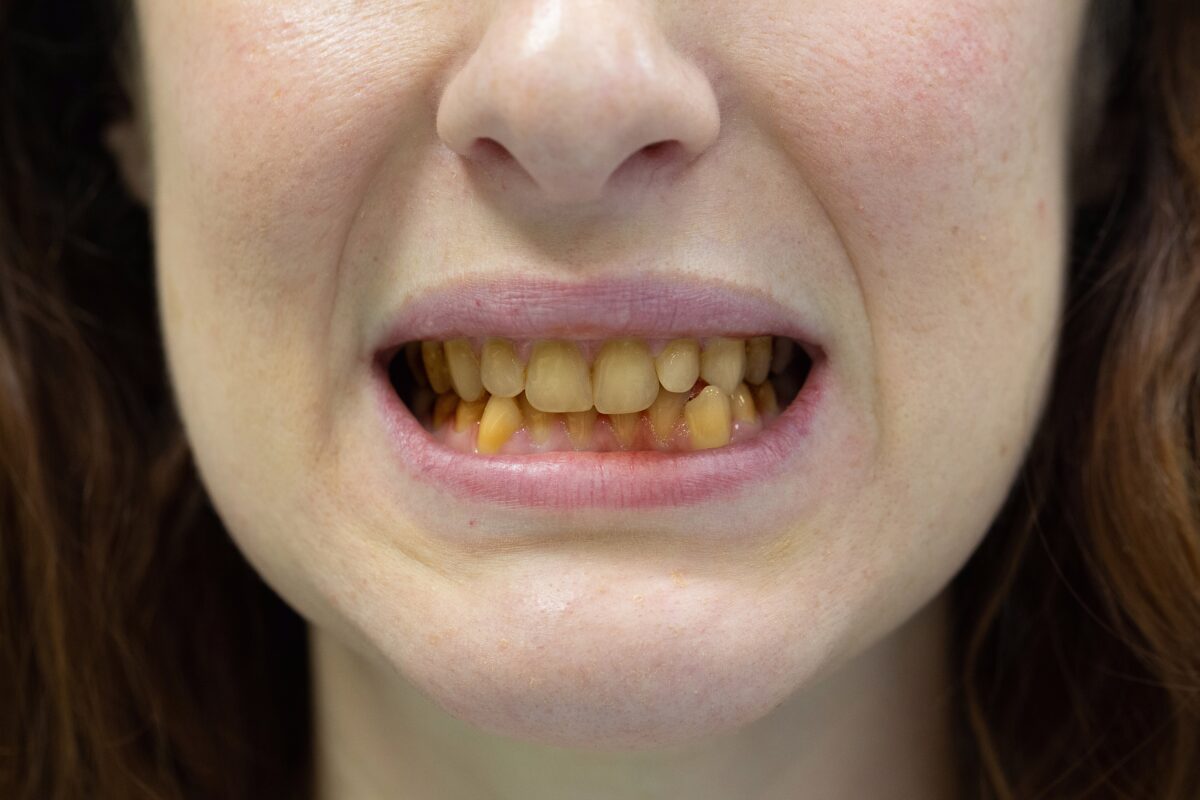Blog
Dental hygiene tips for healthy teeth & gums

What are the most common causes of teeth discoloration?
The desire to have a bright, white smile is common among many people. However, teeth discoloration is a common problem that can detract from the appearance of your smile. Many factors can cause tooth staining, from poor oral hygiene to certain foods and drinks. To prevent or treat tooth discoloration, you should understand the most common causes.
- Poor Oral Hygiene
One of the most common causes of teeth discoloration is poor oral hygiene. If you don’t brush and floss regularly, plaque and bacteria can build up in your mouth, leading to stains. In addition, poor oral hygiene can contribute to gum disease and tooth decay, which can also cause staining or spots.
- Foods and Drinks
Certain foods and drinks can also cause tooth discoloration. Common culprits include coffee, tea, red wine, cola, and tomato sauce. These foods and beverages contain chromogens, pigment molecules that can stick to your mouth and cause stains over time. In addition, acidic foods and drinks can erode dental enamel, which makes them more stain-prone.
- Tobacco Use
Tobacco use is another common cause of tooth stains. Smoking and chewing tobacco can cause stains on your teeth and increase your risk for gum disease and oral cancer. Nicotine, the addictive substance in tobacco, can also cause your tooth to turn yellow over time.
- Aging
As we age, our teeth naturally become more discolored. It is because the enamel on the tooth wears down over time, revealing the yellowish dentin underneath. In addition, the enamel layer on the tooth becomes thinner as we age, making it more susceptible to staining from foods, drinks, and other factors.
- Medications
Certain medications can also cause tooth staining as a side effect. For example, some antibiotics, such as tetracycline and doxycycline, can cause yellow or gray stains on the teeth, especially in children under 8. Other medications, such as antihistamines, antipsychotics, and high-blood pressure drugs, can also cause discoloration.
- Genetics
Some people are more prone to tooth discoloration than others due to genetics. If your parents or grandparents have discolored teeth, there is a greater chance that you will also suffer from staining issues.
- Trauma
Trauma to the teeth, such as from a fall or sports injury, can also cause discoloration. If the tooth’s nerve is damaged, it may turn gray or black over time. In addition, if the tooth is chipped or cracked, it may be more susceptible to staining from foods and drinks.
- Fluorosis
The condition of fluorosis results from too much fluoride exposure in childhood, and it can cause white or brown stains on the teeth and pits or grooves in the enamel. Fluorosis is usually caused by drinking water that contains high levels of fluoride, but it can also be caused by swallowing toothpaste or other fluoride-containing products.
Prevention and Treatment
You can prevent tooth staining by taking several steps. These include:
- Keeping your mouth clean with regular brushing and flossing
- Limiting your consumption of foods and drinks that can cause staining
- Quitting smoking or chewing tobacco
- Keeping your mouth moist and washing away food particles by drinking plenty of water can also help.
- Seeing your dentist regularly for cleanings and checkups
If you already have a discolored tooth, several treatments are available to help restore your smile. These include:
- Whitening Treatment
Whitening treatment is a popular and effective treatment. This procedure involves applying a bleaching agent to the teeth to remove stains and discoloration. Several whitening kits are available, including in-office treatments and at-home kits.
- Dental Bonding
The process of dental bonding involves applying a tooth-colored resin to the teeth to improve their appearance. This treatment is often used to repair a chipped or cracked tooth but can also cover up tooth stains.
- Porcelain Veneers
The porcelain veneers cover the front surface of the teeth with thin, custom-made shells of porcelain. They are used to improve the appearance of your smile, including discoloration and misalignment.
Tooth staining is a common problem that can detract from the appearance of your smile. The most common causes of discoloration include poor oral hygiene, foods and drinks, tobacco use, aging, medications, genetics, trauma, and fluorosis. If you are suffering from the same issue, talk to your dentist to determine the best treatment for your needs and budget.
